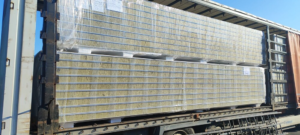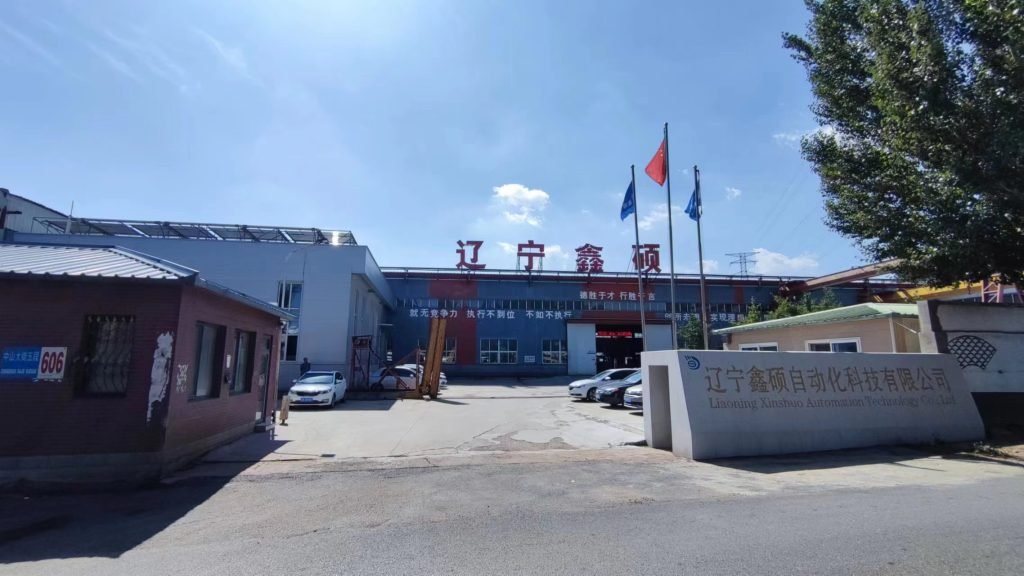The sandwich panel production line represents a pinnacle of modern industrial engineering, designed to manufacture sandwich panels—composite structures featuring a lightweight core encased between two durable outer layers. These panels are integral to industries such as construction, cold storage, automotive, and prefabricated building manufacturing, offering superior insulation, structural integrity, and versatility. This article provides an in-depth, professional exploration of the sandwich panel production line, with detailed sections on its components, technical specifications, production process, applications,
Introduction to the Sandwich Panel Production Line
The sandwich panel production line is a fully integrated, automated system engineered to produce sandwich panels efficiently and consistently. These panels typically consist of a core material—such as polyurethane (PU), polyisocyanurate (PIR), expanded polystyrene (EPS), or mineral wool—sandwiched between two outer facings, commonly made of steel, aluminum, or composite materials. The sandwich panel production line streamlines the entire manufacturing process, from raw material preparation to finished panel stacking, delivering high-quality products that meet stringent industry standards.
The versatility of the sandwich panel production line lies in its ability to cater to diverse applications, producing panels with varying thicknesses (20-300 mm), widths (950-1200 mm), and lengths (up to 15 meters). Whether it’s a continuous line for high-volume output or a discontinuous setup for custom batches, this technology offers manufacturers unparalleled flexibility and efficiency. Drawing from industry practices, such as those exemplified by advanced production systems, this article explores the sandwich panel production line’s technical intricacies and practical benefits.

Components of the Sandwich Panel Production Line
The sandwich panel production line comprises several specialized components, each meticulously designed to perform a specific function in the production process. Below is a detailed breakdown of these key elements:
1. Uncoiling System
The uncoiling system initiates the production process by feeding metal coils—typically galvanized steel or aluminum—into the sandwich panel production line. Hydraulic decoilers handle coils weighing 5-10 tons, with widths of 1000-1250 mm and thicknesses of 0.4-0.8 mm. Operating at speeds up to 20 m/min, this system ensures a steady material supply, with tension controls maintaining alignment within ±1 mm.
2. Roll Forming Machine
The roll forming machine shapes the metal sheets into desired profiles (e.g., flat, corrugated, or trapezoidal) using 10-15 roller stations. It operates at 10-20 m/min, with adjustable roller gaps (±0.1 mm precision) and can process sheets up to 15 meters long. Anti-corrosion coatings on rollers ensure a lifespan of 10-15 years.
3. Foaming System
The foaming system is the core of the sandwich panel production line, injecting the insulating material between the metal layers. For PU/PIR, high-pressure pumps (20-30 bar) deliver foam at 300-500 g/s, achieving densities of 40-60 kg/m³. Low-pressure systems for EPS operate at 5-10 bar, with flow rates of 100-200 g/s. Nozzles ensure uniform distribution, with curing times of 20-50 seconds.
4. Double Belt Conveyor
The double belt conveyor presses and conveys the panel assembly as the foam cures. Steel or rubber belts run at 0.5-2 m/min, applying pressures of 0.1-0.5 MPa. With lengths of 20-40 meters and curing temperatures of 40-60°C, it ensures uniform thickness (20-300 mm, ±0.5 mm tolerance).
5. Cutting System
The cutting system trims panels to specified lengths (1-15 meters) using circular s
aws (400-600 mm diameter) or band saws, with ±2 mm accuracy. Cutting speeds reach 10 m/min, and dust extraction systems (500-1000 m³/h) maintain a clean environment.
6. Stacking and Packing System
The stacking system uses automated arms or rollers to stack panels at 10-20 units/min, with stack heights up to 2 meters. The packing system wraps stacks in protective film, preparing them for shipment.
Technical Specifications
The sandwich panel production line’s performance is defined by its technical capabilities, as outlined in the table below:
| Parameter | Specification |
|---|---|
| Production Speed | Continuous: 10-15 m/min; Discontinuous: 2-5 m/min |
| Output Capacity | 600-1000 m²/hour (continuous); 120-300 m²/hour (discontinuous) |
| Power Consumption | 30-100 kW (380-440V, 50/60 Hz) |
| Panel Thickness | 20-300 mm (±0.5 mm) |
| Panel Width | 950-1200 mm |
| Panel Length | 1-15 m (±2 mm) |
| Foam Density | PU/PIR: 40-60 kg/m³; EPS: 15-25 kg/m³ |
| Thermal Conductivity | PU/PIR: 0.019-0.022 W/mK; EPS: 0.035-0.040 W/mK |
| Control System | PLC with 10-inch touchscreen HMI |
These specifications highlight the sandwich panel production line’s ability to deliver high-speed, precise, and energy-efficient manufacturing, adaptable to various panel types and sizes.

Production Process of the Sandwich Panel Production Line
The sandwich panel production line operates through a systematic, automated process, ensuring efficiency and quality. Below is a step-by-step overview:
- Material Feeding: Metal coils are uncoiled at 15-20 m/min, aligned (±1 mm) using guide rollers, and fed into the roll forming machine.
- Roll Forming: Sheets are shaped into profiles at 10-20 m/min through 10-15 roller stations, with hydraulic presses ensuring flatness (±0.2 mm).
- Foaming: PU/PIR foam is injected at 300-500 g/s (20-30 bar), expanding in 20-40 seconds, while EPS is applied at 100-200 g/s (5-10 bar), curing in 40-50 seconds.
- Curing: The double belt conveyor presses at 0.1-0.5 MPa for 2-5 minutes, with hot air circulation (40-60°C) stabilizing the foam.
- Cutting: Automated saws cut panels at 10 m/min, guided by lasers (±2 mm), with dust extraction maintaining air quality.
- Stacking and Packing: Panels are stacked at 10-20 units/min and wrapped for shipment, reducing manual handling by 80%.
Automation, driven by PLC systems, ensures precision and minimizes errors, with sensors adjusting foam flow (±2 g/s) and thickness (±0.5 mm) in real time.
Types of Sandwich Panel Production Lines
The sandwich panel production line comes in various configurations, tailored to core materials and production methods:
| Type | Core Material | Key Features | Applications |
|---|---|---|---|
| PU/PIR Continuous Line | Polyurethane/Polyisocyanurate | High insulation (0.022 W/m²K), fire resistance (B1/B2), 10-15 m/min | Buildings, cold storage |
| EPS Continuous Line | Expanded Polystyrene | Lightweight (15-25 kg/m³), cost-effective (3-4 m²K/W), 10-15 m/min | Residential, budget projects |
| Mineral Wool Continuous Line | Rock Wool | Soundproofing (35 dB), fire resistance (A1), 10-15 m/min | Industrial, high-safety areas |
| Discontinuous Line | PU/PIR/EPS/Mineral Wool | Flexible batches (2-5 m/min), custom sizes | Small-scale, specialized projects |
These variations allow manufacturers to select a sandwich panel production line suited to specific performance requirements and production scales.
Applications of the Sandwich Panel Production Line
The sandwich panel production line serves a broad range of industries, producing panels with tailored properties:
Construction
In construction, the sandwich panel production line manufactures roofing and wall panels with insulation values of 4-6 m²K/W (PU/PIR), reducing energy costs by 30-50%. These panels support loads of 200-300 kg/m², ideal for warehouses and residential buildings.
Cold Storage
For cold storage, the sandwich panel production line produces panels with 100-200 mm PIR cores (0.019 W/mK), maintaining temperatures of -20°C to 5°C with minimal heat loss (0.5-1 W/m²).
Industrial Facilities
Industrial applications benefit from mineral wool panels (A1 rating, 120-minute fire resistance) and PU/PIR panels (0.3 MPa strength), produced by the sandwich panel production line for factories and power plants.
Automotive
The sandwich panel production line creates lightweight EPS panels (10-15 kg/m²) for trailers and caravans, improving fuel efficiency by 5-10%.
Agriculture
In agriculture, the sandwich panel production line supplies PU/PIR panels (4-6 m²K/W) for barns and greenhouses, ensuring stable climates (±2°C).
Advantages of the Sandwich Panel Production Line
High Productivity
The sandwich panel production line’s continuous operation (10-15 m/min) delivers 600-1000 m²/hour, a 400-500% increase over manual methods (120-180 m²/hour), enabling daily outputs of 4,800-8,000 m² in an 8-hour shift.
Cost Efficiency
Automation reduces labor costs by 80% (2-4 vs. 10-15 workers), saving $240,000-$590,000/year. Material waste drops by 10-15% (e.g., $30,000-$71,250/year), and energy efficiency saves $7,500-$15,000 annually.
Versatility
The sandwich panel production line supports multiple cores (PU, PIR, EPS, mineral wool) and sizes (20-300 mm thick), catering to diverse applications with quick adjustments (1-2 hours).
Quality Assurance
Precision (±0.5 mm thickness, 0.2-0.3 MPa strength) and uniform insulation (0.019-0.022 W/mK) ensure panels meet standards like EN 14509, enhancing reliability.
Sustainability
Eco-friendly agents (cyclopentane, GWP < 10) and energy savings (20-30%) reduce emissions by 5-10 tons/year, aligning with green building goals.
Cost Analysis of the Sandwich Panel Production Line
The table below outlines the cost components of operating a sandwich panel production line:
| Cost Category | Estimated Cost | Notes |
|---|---|---|
| Initial Investment | $200,000-$500,000 | Continuous line; $100,000-$250,000 for discontinuous |
| Raw Materials (per 100 m²) | $800-$1,500 | Steel: $40-$60; PU/PIR: $80-$150; EPS: $30-$45 |
| Energy (per day) | $50-$140 | 30-100 kW, 10-hour shift, $0.1-$0.2/kWh |
| Labor (per day) | $240-$640 | 2-4 workers, $15-$20/hour, 8-hour shift |
| Maintenance (per year) | $5,000-$20,000 | 2-5% of machine cost |
| Total Cost per m² | $10-$20 | Includes materials, energy, labor |
ROI typically occurs within 1-3 years at 50% capacity (e.g., 2,500 m²/day), driven by high output and cost savings.
Conclusion
The sandwich panel production line is a sophisticated, efficient, and versatile manufacturing solution that delivers high-quality sandwich panels for diverse applications. Its advanced components—uncoiling, roll forming, foaming, and cutting systems—work in harmony to produce panels with exceptional insulation (0.019-0.022 W/mK), strength (0.2-0.3 MPa), and durability. Offering productivity (600-1000 m²/hour), cost efficiency ($10-$20/m²), and sustainability (5-10 tons CO2 saved/year), the sandwich panel production line is a vital asset for modern industry. Inspired by advanced systems like those from leading manufacturers, this technology continues to shape the future of construction and beyond.



